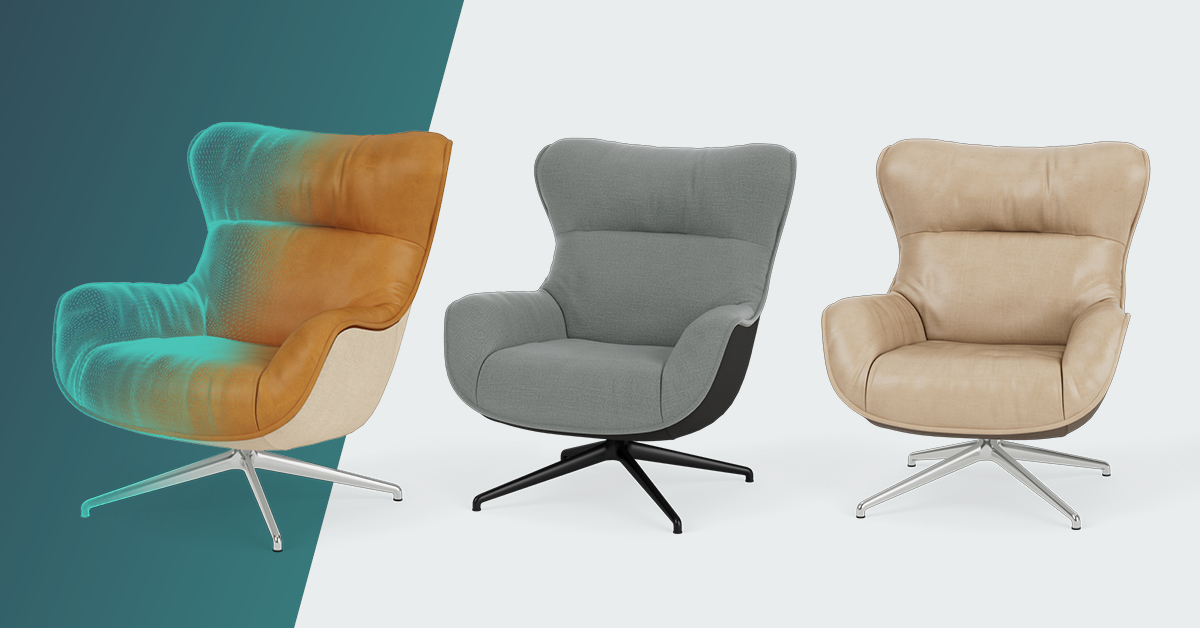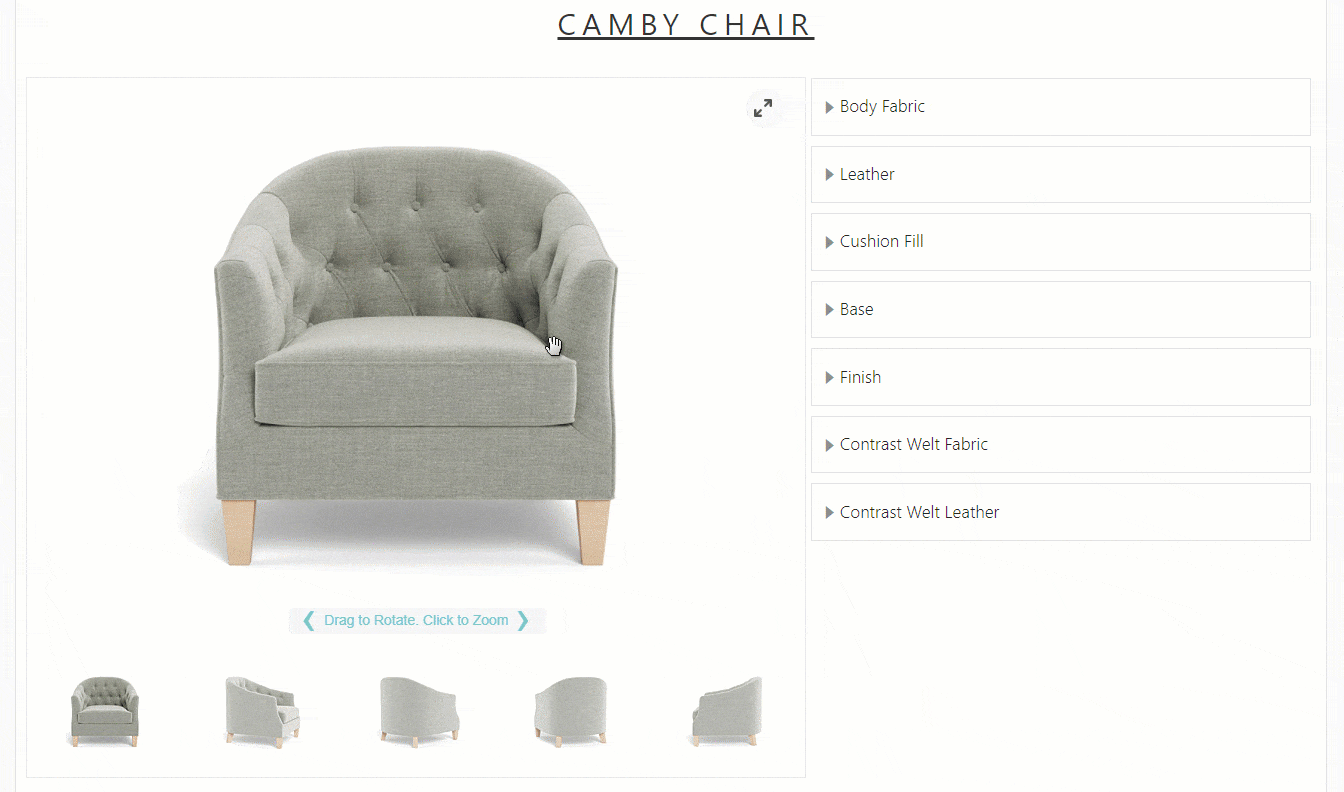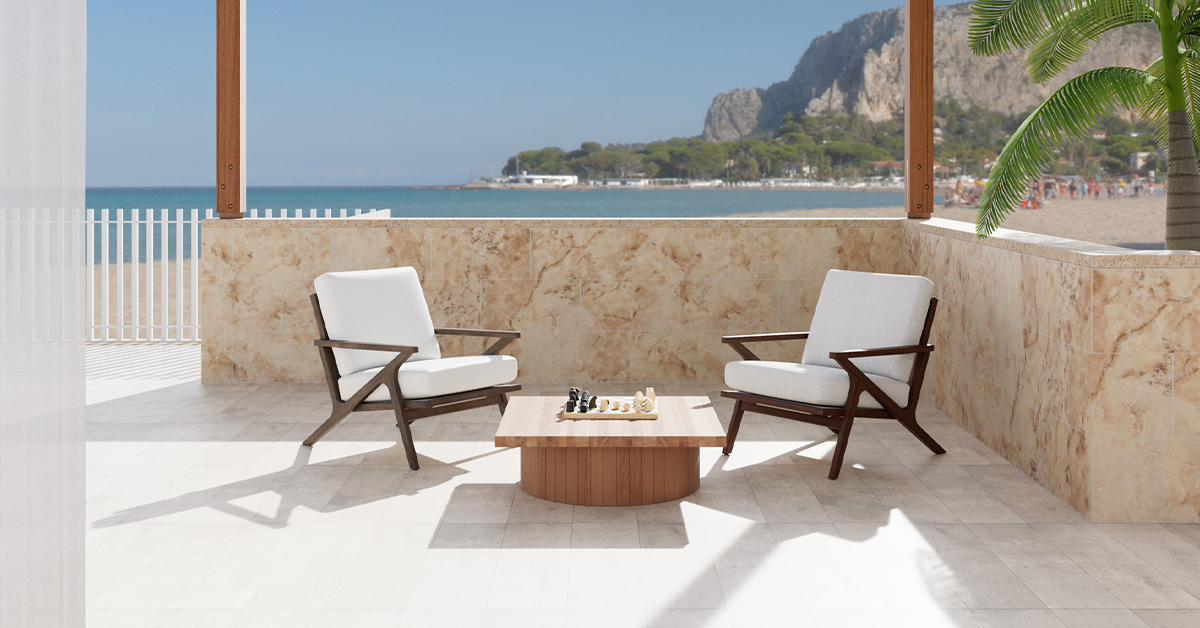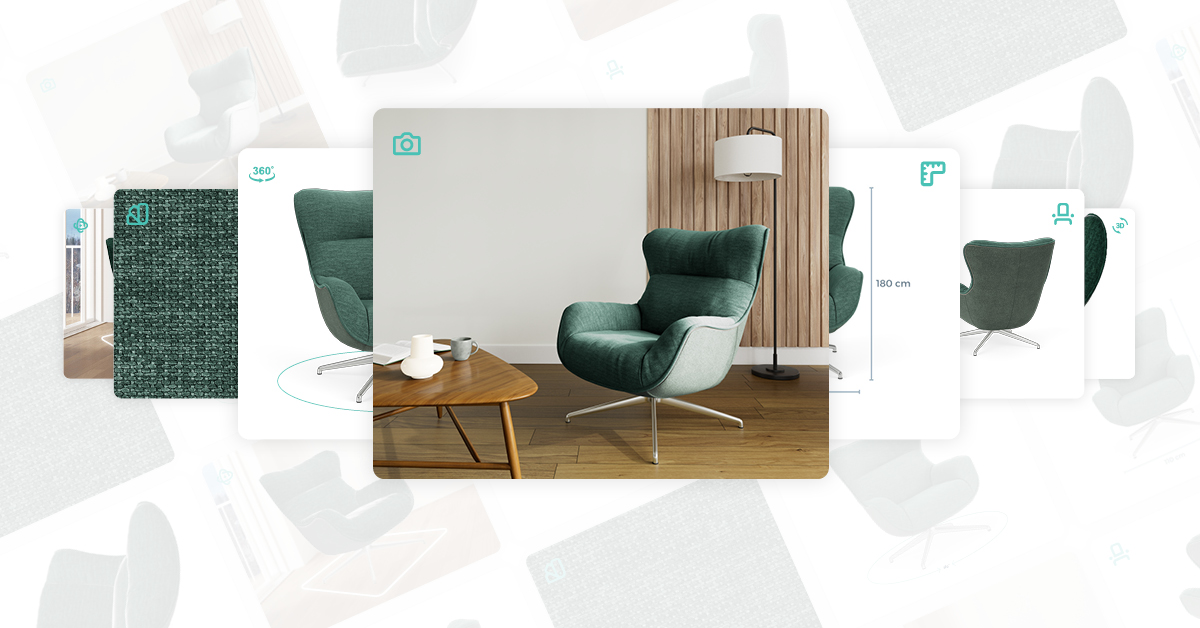The B2B buying journey has changed. We can see tech-savvy furniture brands with an engaging online experience that beats retailers and direct-to-consumer (DTC) brands. Digital technologies have shifted the way we discover, compare, and purchase products. The moment we think of a need, we turn to our devices and seek information that can help us make the right decision. This is true for business buyers, as well.
A mindset shift
Even though the furniture industry has been slow to adapt to the new realities, traditional brands are finally starting to catch up and experiment with new forms of engagement, both online and in showrooms, to deliver more compelling customer experiences.
We now live in an era of information explosion, and the availability of quality information through digital channels has made it far easier for B2B buyers to gather information independently. This means that sellers have fewer opportunities to influence their final decisions. To put it in a nutshell: the future of B2B buying is online. The importance of website experience for B2B furniture companies has grown substantially in the past few years. Today business buyers go through a significant amount of research online before stepping into a store or engaging with a salesperson.
To accommodate this behavioral shift, furniture brands need an engaging website experience supported with high-quality visualization and product information details that simplify the decision-making process. This shift is central to any successful furniture marketing strategy.
“We need to be prepared to meet the consumer at the beginning of the shopping journey. Part of that is helping showcase what is possible with products, and that’s where online visualization is necessary when there are options. The more information we can provide upfront, the better the experience for the customer.” - Neil MacKenzie, Senior Vice President of Marketing, Universal Furniture
At the same time, furniture brands also witnessed increased website traffic from end customers, so they quickly realized that their website experience has to be at the top of their priority list.
Seven ways 3D product visualization can help furniture brands thrive
As online presence becomes more important than ever for furniture brands, the first question is how to close the online-offline gap and offer engaging experiences online.
The answer is 3D product visualization software.
Let’s clear things up right from the beginning — 3D product visualization doesn’t have to be hard, and it’s actually quite simple and straightforward. Plus, it can help you with use cases across the board, thus saving you time, money, and energy.
Without further ado, let’s go through the benefits that 3D product visualization can bring to furniture brands:
1. Product customization
Why it matters
Furniture is one of the three product categories where customers make the most personalized purchases, and having a product configurator is the easiest way to show different fabrics, colors, and finishes, without having to produce and photograph every single product variation. 3D product visualization is especially important for brands that have a wide product portfolio with lots of variations.
Benefit
Thanks to advanced technologies, customizing products can enable scalable mass customization of home furnishings, thus empowering brands to showcase thousands of product variations while saving costs.
Case in point: Montana
Montana Furniture is a family-owned company, established in 1982, leading in storage and furniture for private homes and contemporary office spaces. All Montana modules are designed, developed, and made in Denmark. They work hard to uphold the highest standards of processing, painting, and assembling — creating furniture that will last a lifetime.
Montana uses product customization to enhance the online shopping experience. By implementing 3D technology, Montana's 70,000+ configuration options are now visible digitally, allowing customers to tailor a product to suit their personal style. The timeless functionality of Montana’s pieces that opens up endless possibilities requires product visualization that can bring their products to life with an engaging 3D modular configurator.
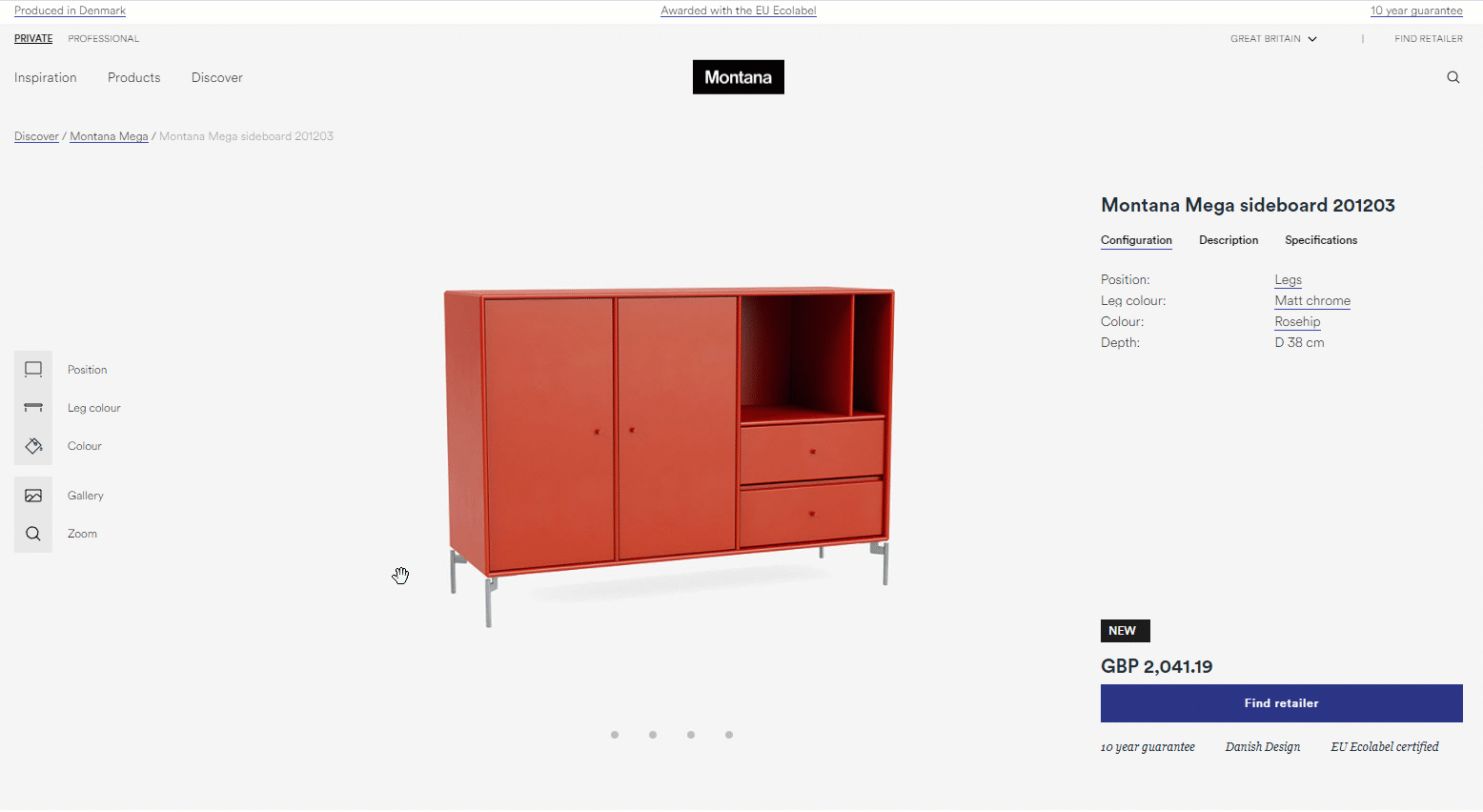
2. Engaging product page experience
Why it matters
In industries like furniture, where product aesthetics and details have a major influence on the buyer’s purchasing decision, you have to take care of your web presence, as it’s the first touchpoint with your brand. Today’s business buyers are digitally native, and they reflect their consumers' habits in the B2B world.
Benefit
In the online world, features like 360-degree view, alternate angles, and detail shots are the best way to compensate for the lack of tactile sense, which is very important, especially when it comes to furniture purchases.
- Adding 360-degree images on your product page can significantly improve your web session duration by offering interactivity. Thanks to advanced technology, 3D renderings often show colors more correctly than photography. Moreover, 3D renderings can do things that photography simply can’t do – 360-degree spin, product cutouts, and interactive room scenes
- Alternate angle images can help buyers get a better sense of how your products look from different perspectives
- Detail shots, on the other hand, show delicate details like fabric and texture, by getting up close and personal with the buyer.
Case in point: Universal
Universal Furniture creates quality furnishings for the whole home with a focus on function and lifestyle. The company’s case goods, upholstery, accent, and accessory designs are sold through retailers and interior designers throughout North America and around the world.
As a forward-thinking company, Universal was aware of the importance of its website experience way before the COVID-19 pandemic. As a result, they’ve created an engaging product page experience with different features. From 360-degree views and sharp 4K zoom to alternate angle images and a myriad of configuration options, they make sure to present their unique designer collections in the best possible light.
3. High-quality zoom
Why it matters
Details play a crucial role in furniture buying. Texture, patterns, and stitching can drastically change the look of a piece. The main reason why many customers prefer in-store furniture shopping is the fact that they can scrutinize the product before buying. The same is true for business buyers who make decisions during trade shows. The zoom feature mimics the way consumers and business buyers look at a product in real life.
Benefit
Knowing that B2B habits have changed drastically, showing off product details in 4K can compensate for the sensation of rich, velvety texture and soft cushions. Having a sharp, 4K zoom on your product pages allows your visitors to scrutinize products, answering any questions they may have.
Case in point: Hydeline
Hydeline is a U.S. furniture brand that strives to provide a sophisticated selection of high-quality hand-crafted leather furnishings. If you visit their product pages, you will notice the attention to detail, which creates a seamless and delightful digital experience for the buyer. Thanks to the sharp 4K zoom, buyers can inspect even the slightest product details allowing them to make an informed purchase decision.
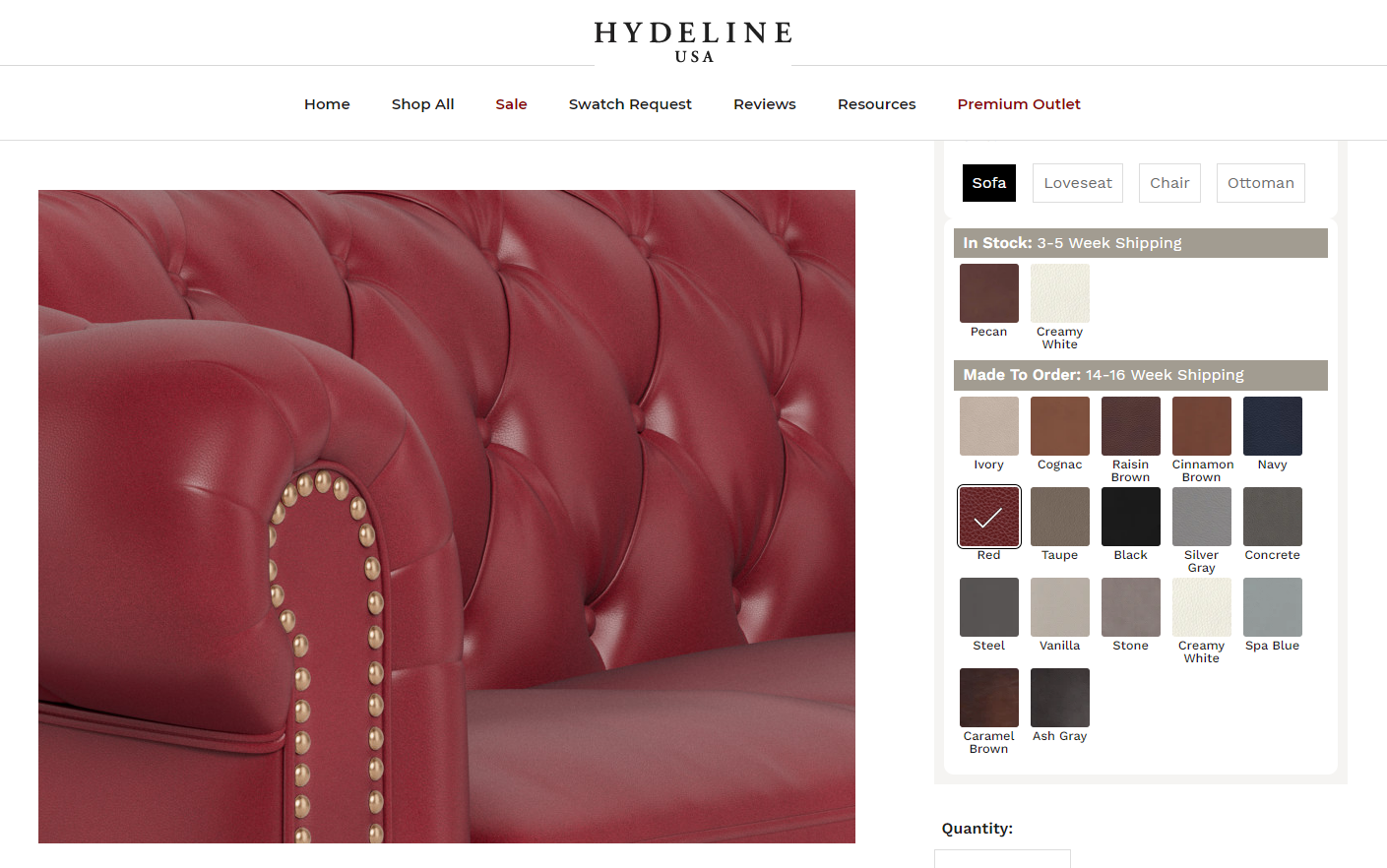
4. Lifestyle imagery
Why it matters
Context is essential in furniture sales. This is true for both brands and retailers. Combining elements to create an in-context photo will help you convey a certain quality, tone, or mood that will influence the buyer’s perception of your product, ultimately leading to higher sales.
Benefit
Furniture is all about context. Not only do room scenes help explain the features of the product (color, fabric, size), but they also help buyers visualize how the product looks in a real-life setting. Having in mind that B2B buyers act a lot like end customers, high-quality lifestyle imagery can influence their buying decision.
Case in point: Swoon
Swoon Editions is a UK design-led furniture brand that creates beautifully handcrafted furniture, helping customers create their personal sanctuary. The brand relies on 3D product visualization services to showcase its products in context and at scale. The ability to easily generate photorealistic lifestyle imagery makes it easy for Swoon to serve a wide range of photorealistic content across touchpoints, such as product feed, product pages, email marketing campaigns, and product thumbnails to create a consistent digital experience and inspire customers.
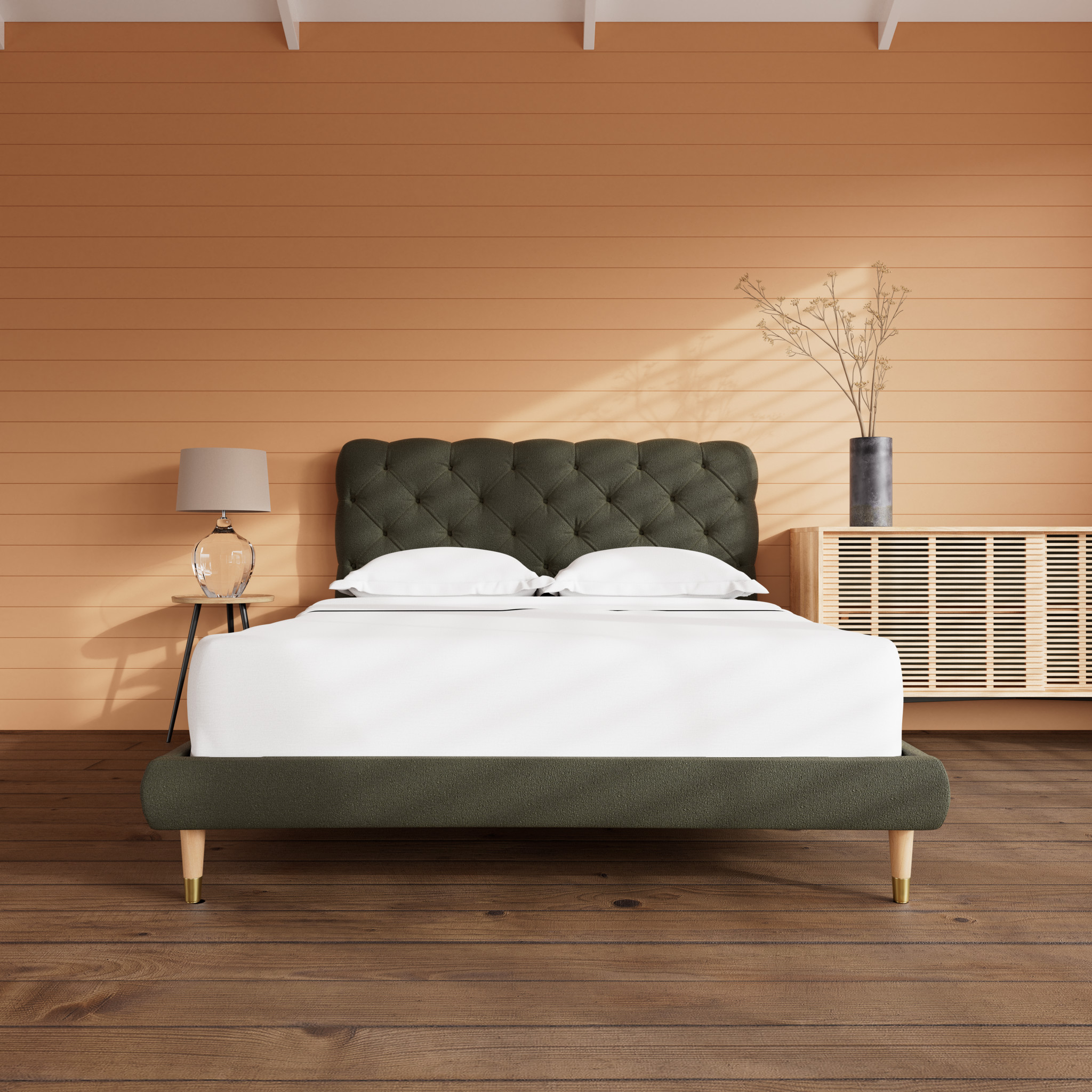
5. Assets for the retailer network
Why it matters
Supporting retailers with assets to help them sell more products is one of the top priorities for brands. Digital-native shoppers consider technology as an integral part of their lives, and they expect a seamless omnichannel shopping experience. Now, the pressure is on for brands to support their retail network with visuals and assets that will fuel more conversions or inspire in-store visits.
The best part when using 3D product visualization is that you can easily leverage the assets and distribute them across your retailer network. One critical aspect to keep in mind when choosing a 3D vendor is to look for a solution that also offers 3D export to different formats and models. If you select a vendor that doesn’t provide asset conversion, you will have limited usage of your 3D assets.
Benefit
The business logic in supporting your network with high-quality, versatile product visuals is pretty clear. If you empower your network to sell more, you will sell more as well, while strengthening relationships with your dealers and building a strong brand at the same time.
Case in point: Palliser
Palliser has been focused on creating exceptional products for the entire home and delivering meaningful value to its customers since 1944. As a leading North American furniture company, Palliser is committed to transforming the furniture shopping experience with step-by-step product customization, 360 views, and 4K zoom. Moving forward, they will leverage 3D product visualization software to equip their retailer network with high-quality assets.
6. PDF spec sheets and downloadable images
Why it matters
One particular feature that furniture brands often have on their product pages is the ability to download images or PDF spec sheets. Product specifications are a standard feature on most furniture manufacturers’ websites. Knowing that furniture is an incredibly visual industry, product specifications need to go beyond the benefits and high-level descriptions and include photorealistic visuals of the products.
Having to take photos of all your product variations just to be able to add them to the specifications is time-consuming and very costly. This is where 3D product visualization comes in handy.
Benefit
Creating a furniture specification sheet can be a challenge. However, thanks to advanced technologies, some 3D visualization vendors also offer a programmatic process of creating effective product spec sheets by embedding high-quality visuals into the product spec sheet (PDF) configurator.
This way, you can help your clients make informed decisions and also repurpose 3D assets throughout the furniture buyer journey to create a memorable experience.
Case in point: Century
Century Furniture is one of the world's largest privately-owned manufacturers of upper-end residential furniture. The U.S. furniture brand is recognized in the industry as a design leader, ranked at the forefront for its expertise in finishing and the many details of fine craftsmanship. Using 3D product visualization, Century lets its customers see the products in 360-degree views, select an angle and a color, and then download a PDF of the product specification.
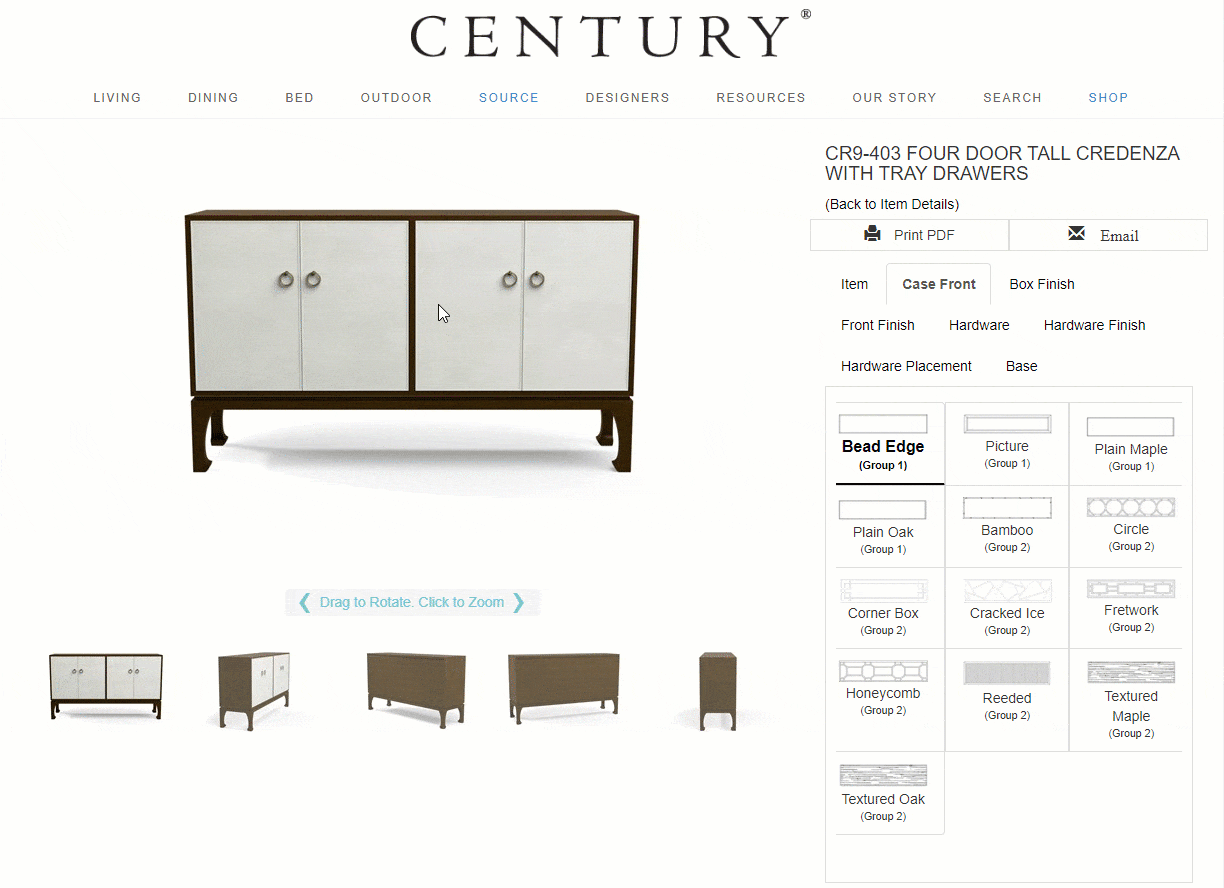
7. Catalogs
Why it matters
Catalogs have been a key element for B2B furniture companies for over a century. Today, brands can quickly and easily update digital catalogs on a regular basis. In an increasingly competitive world, being able to provide accurate information quickly is a great advantage. The most important thing is that your catalogs need to be up-to-date and relevant. Accurate product specifications and high-quality visuals are crucial in the furniture buying process.
Benefit
Thanks to 3D visualization technologies, you can show unlimited variations of your products with different colors, fabrics, and finishes without having to produce all of them in order to take pictures. This way, you will save time and resources while showing your complete product assortment. The benefits of using an online catalog go beyond convincing retailers to resell your products. Catalogs are a great tool to equip your retailers, helping them sell more furniture products online and in-store.
Case in point: Riverside Furniture
Riverside Furniture Corporation is truly an American success story. From a modest beginning in 1946, making furniture in a single plant, Riverside has grown to become a major brand name in the furniture industry. Having a regularly updated product catalog is one of the most important assets for Riverside. While photoshoots produced beautiful scenes highlighting the products, they weren’t versatile when it came to being reused. Today, besides traditional photography, they use 3D product visualization to create lifestyle imagery at scale and showcase products in a wide range of colors and materials.

Six signs that it’s time for 3D product visualization
If you are still trying to decide whether 3D product visualization is the right choice for your business, here are the telltale signs that adopting 3D technology can help simplify processes, reduce costs, and improve efficiency.
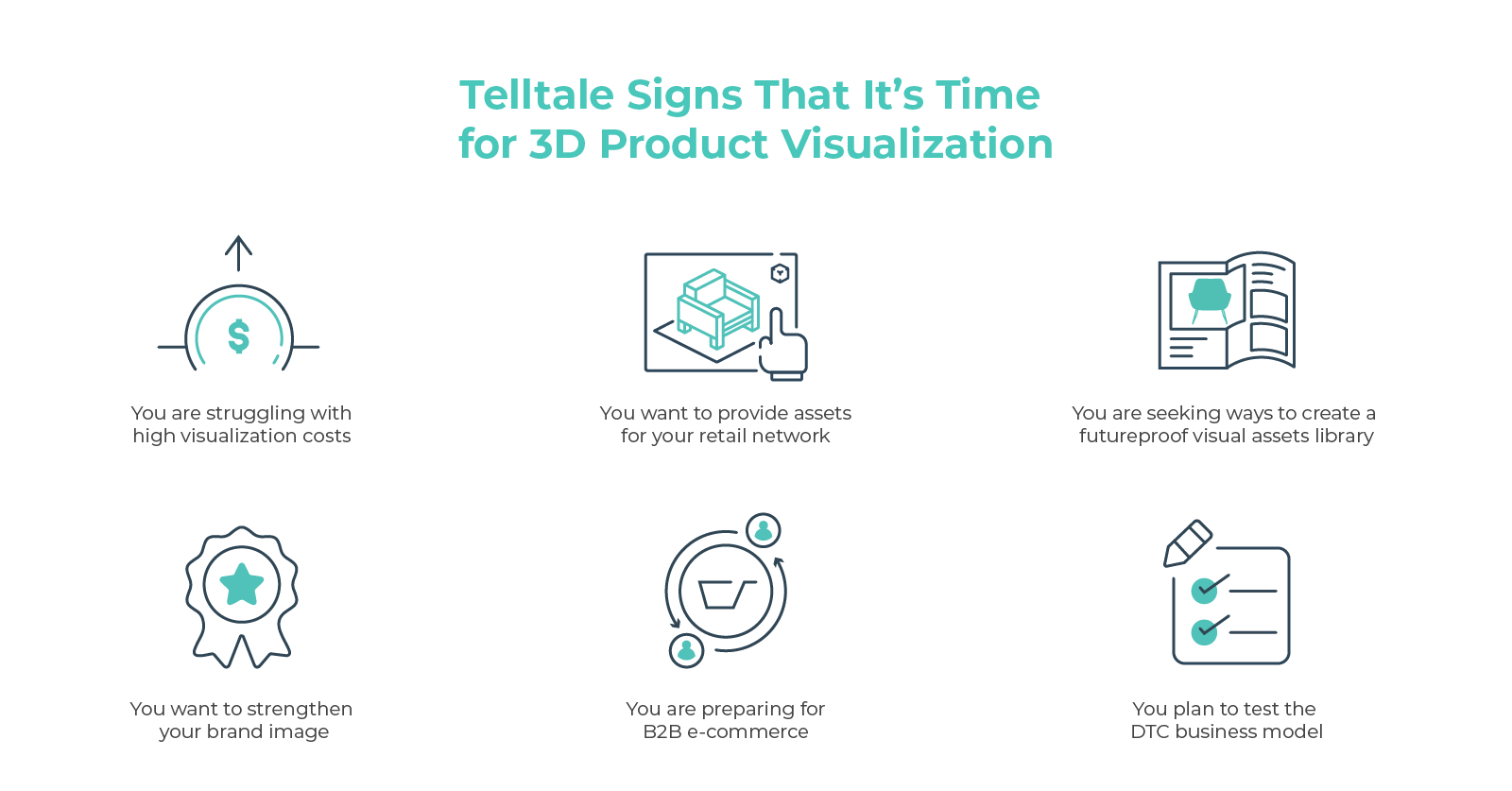
- You are struggling with high visualization costs - Traditional product photography can be quite expensive and time-consuming, especially if you want to showcase a wide range of your product variations. By using 3D visualization, you can create thousands of product variations without having to produce furniture in different colors, fabrics, and finishes.
- You want to provide assets for your retail network - The more your retailer network sells, the more you’ll sell. The best way to support them in that endeavor is to equip them with high-quality visual assets that they can leverage throughout the furniture buyer journey.
- You are seeking ways to create a futureproof visual assets library - In a world full of visuals and rich content, having a product visualization strategy is a must. Furniture brands must be aware that building a high-quality, futureproof asset library will make the difference between success and failure. As we step into the new decade, 3D commerce will be completely mainstream and play an integral part in the success of the vast majority of furniture manufacturers by powering more immersive experiences and visualization use cases.
- You want to strengthen your brand image - If you are working on strengthening your brand image and unifying brand experience across channels, 3D product visualization is your best bet, as it offers versatile use cases that can improve your brand positioning and help you stay ahead of the competition.
- You are preparing for B2B e-commerce - Even though furniture e-commerce was exclusive to retailers, things are starting to change. The modern B2B buyer is a digital native, data-driven, and self-reliant decision-maker. This emphasizes the importance of your online presence, as your sales reps have little chance to change the mind of a well-informed business buyer. If you are considering ways to step up your game, 3D commerce can help you create the best online shopping experience.
- You plan to test the DTC business model - Over the past few years, brands have increasingly embraced the direct-to-consumer (DTC) business model alongside traditional retail. Shipping products directly to buyers without relying on traditional stores or other middlemen allows DTC companies to sell their products at lower costs than traditional consumer brands and to maintain end-to-end control over the production, marketing, and distribution of products. This means that they need to create a rich online shopping experience, and the best way to do so is with 3D product visualization.
What's next?
One thing we know for sure is that the new decade will reward tech-savvy, forward-thinking companies, putting them ahead of the competition. 3D product visualization can help you set up the foundation for future growth and transformation.
Are you ready to transform your online presence? Let’s talk about your product visualization strategy.

